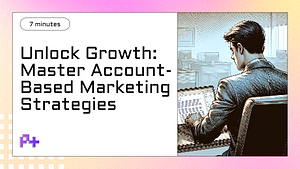1. What is Customer Acquisition? Definition and Importance
Customer acquisition refers to the process of bringing new customers to a business, which is crucial for growth and sustainability. It encompasses a variety of strategies and tactics aimed at attracting potential clients and converting them into paying customers. This process can involve everything from marketing campaigns and promotional offers to optimizing customer interactions and leveraging social media. Understanding customer acquisition is essential for businesses of all sizes, as it directly impacts revenue and long-term success.
The importance of customer acquisition cannot be overstated. In a competitive market, acquiring new customers is vital for maintaining a healthy customer base and ensuring that a business continues to thrive. Effective customer acquisition strategies not only help in increasing sales but also enhance brand awareness and loyalty. Additionally, a well-structured customer acquisition strategy allows businesses to identify and target specific demographics, ensuring that marketing efforts are not wasted on audiences unlikely to convert. By focusing on the right channels and messages, companies can maximize their return on investment (ROI) and achieve sustainable growth.
Moreover, the cost associated with customer acquisition must be carefully managed. Businesses need to balance the expenses involved in attracting new customers with the lifetime value those customers bring. This means that understanding the customer acquisition cost (CAC) is crucial; it helps assess the effectiveness of various marketing efforts and guides future strategies. By analyzing data and refining approaches over time, companies can optimize their customer acquisition process, ensuring it aligns with overall business goals while fostering a strong and engaged customer community.
2. Understanding the Customer Acquisition Funnel
Understanding the customer acquisition funnel is essential for businesses aiming to effectively attract and retain new clients. The customer acquisition funnel is a model that illustrates the stages potential customers go through before making a purchase. It typically comprises several key phases: awareness, consideration, conversion, and retention. By grasping these stages, companies can tailor their marketing strategies to guide prospects smoothly through the funnel, ultimately enhancing their customer acquisition efforts.
At the awareness stage, potential customers first encounter a brand or product. This initial exposure can occur through various channels, such as social media, search engine results, or word-of-mouth recommendations. To optimize this stage of the funnel, businesses should focus on creating compelling content that resonates with their target audience. Engaging blog posts, eye-catching ads, and informative videos can all contribute to building brand awareness. By effectively utilizing SEO strategies to enhance visibility on search engines, companies can attract a larger pool of prospects into the funnel.
Once potential customers are aware of a brand, they move into the consideration phase, where they evaluate different options and compare offerings. At this point, it’s crucial for businesses to provide detailed information about their products or services, including customer testimonials, case studies, and comparisons with competitors. This not only helps in establishing credibility but also in addressing any concerns or questions that prospects may have. To optimize this stage for customer acquisition, brands should utilize retargeting strategies and personalized email marketing campaigns that nurture leads and keep them engaged. By guiding prospects through the funnel with relevant and helpful content, businesses can significantly increase their chances of conversion.
3. Key Customer Acquisition Channels and Strategies
In todays competitive marketplace, understanding the key customer acquisition channels is essential for businesses looking to expand their reach and grow their customer base. One of the most effective channels is digital marketing, which encompasses a variety of strategies such as search engine optimization (SEO), pay-per-click advertising (PPC), and social media marketing. SEO helps businesses improve their organic search rankings, making it easier for potential customers to find them online. By optimizing website content with relevant keywords related to customer acquisition, businesses can attract targeted traffic that is more likely to convert into paying customers. Meanwhile, PPC allows companies to display ads to users who are actively searching for products or services, resulting in immediate visibility and the potential for quick returns on investment.
Another critical channel for customer acquisition is content marketing. By creating valuable and informative content—such as blog posts, whitepapers, and videos—businesses can establish themselves as thought leaders in their industry. This not only builds trust with potential customers but also enhances brand visibility through shares and backlinks. Effective content marketing strategies often include using compelling calls-to-action (CTAs) that guide readers to take the next step, whether it’s subscribing to a newsletter, signing up for a free trial, or making a purchase. By providing well-researched and engaging content, businesses can nurture leads and encourage conversions over time.
Lastly, leveraging partnerships and collaborations can significantly enhance customer acquisition efforts. By teaming up with other businesses or influencers that share a similar target audience, companies can access new markets and customer segments. This could involve co-hosting webinars, participating in joint promotions, or even developing referral programs. These strategies not only expand a brands reach but also provide social proof, as customers are more likely to trust recommendations from sources they already know. By diversifying customer acquisition strategies and utilizing multiple channels effectively, businesses can create a robust framework for attracting and retaining customers in an ever-evolving landscape.
4. How to Measure and Optimize Customer Acquisition
Measuring and optimizing customer acquisition is essential for any business aiming to grow sustainably. The first step in this process involves defining key performance indicators (KPIs) that align with your customer acquisition goals. Common KPIs include customer acquisition cost (CAC), customer lifetime value (CLV), and conversion rates. By analyzing these metrics, businesses can gain insights into the effectiveness of their marketing strategies. For instance, CAC helps determine how much you are spending to acquire each new customer, while CLV provides a forecast of the total revenue a customer will generate throughout their relationship with your brand. Monitoring these figures allows businesses to identify which channels yield the best results and where adjustments are necessary.
Once youve established your KPIs, the next phase is optimization. This involves refining your marketing strategies based on the data collected. Start by evaluating the performance of different acquisition channels—such as social media, email campaigns, and paid advertising. Use A/B testing to experiment with variations of your messaging, targeting, and offers to see which combinations resonate best with your audience. Additionally, consider leveraging customer feedback to understand their experiences during the acquisition process. This qualitative data can reveal pain points and opportunities for improvement, enabling you to enhance your marketing efforts and ultimately drive more effective customer acquisition.
Finally, its important to continuously iterate on your strategies and stay informed about market trends. The digital landscape is ever-evolving, and what works today may not be as effective tomorrow. Regularly review your data and KPIs to ensure that your customer acquisition efforts remain aligned with your business objectives. Implementing a feedback loop where you assess performance, make adjustments, and re-evaluate will help maintain a competitive edge. By focusing on measurement and optimization, businesses can improve their customer acquisition processes, reduce costs, and foster sustainable growth.
5. Examples of Successful Customer Acquisition Strategies
Successful customer acquisition strategies are pivotal for businesses aiming to grow their customer base and enhance revenue. Here are five notable examples that demonstrate effective approaches to attracting and retaining customers.
One standout strategy comes from Dropbox, which implemented a referral program that incentivized existing users to invite new customers. By offering additional storage space for both the referrer and the referred, Dropbox capitalized on word-of-mouth marketing, leading to a 60% increase in sign-ups. This approach not only facilitated customer acquisition but also fostered a sense of community among users, making them more likely to stay engaged with the platform. Referral programs like Dropboxs can serve as a blueprint for businesses looking to leverage their current customer base as a powerful acquisition tool.
Another exemplary customer acquisition strategy is utilized by HubSpot, which focuses on content marketing and inbound marketing techniques. By creating valuable resources such as blogs, eBooks, and webinars, HubSpot attracts potential customers who are seeking solutions to their problems. This educational content positions the brand as an authority in the industry, ultimately converting visitors into leads and customers. Additionally, HubSpot’s free tools serve as a low-barrier entry point for users, allowing them to experience the brand’s value before making a purchase decision. This strategy not only enhances customer acquisition but also builds long-term relationships by establishing trust and credibility.
Lastly, consider the approach taken by Starbucks, which effectively uses loyalty programs to drive customer acquisition. Their mobile app features a rewards system that encourages repeat visits by offering points for purchases that can be redeemed for free items. This not only attracts new customers looking for value but also fosters loyalty among existing ones, increasing the likelihood of repeat business. By creating a seamless user experience that integrates customer acquisition with retention efforts, Starbucks exemplifies how businesses can cultivate a loyal customer base through strategic incentives and engagement.
These examples illustrate the diverse and innovative tactics that can be employed for successful customer acquisition, demonstrating the importance of tailoring strategies to fit the brands unique goals and audience.



